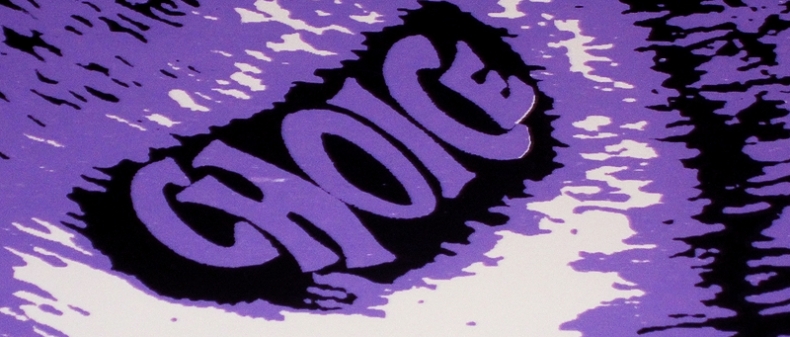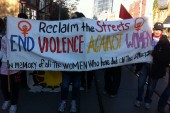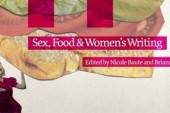
Art by Dana Ayotte
At this weekend’s inaugural Feminist Art Conference, artists from various disciplines came together to honour a common feminist theme. Domestic violence, gender identity, safety, sex, expression, bodies and race were explored through paint, dance, poetry, spoken word, sculpture and more. The conference has already lead to promises of future collaborations, and spawned international interest in hosting similar events across Canada, the States and as far away as Kenya. The conversation generated in this short one-day event is notable no doubt, but there was one pressing question: how can these conversations become more accessible?
“I was thinking about that the whole time I was making the Missing Women Project,” says Ilene Sova, who organized the event as a way to provide a deeper opportunity to discuss feminist art and issues as she debuted her own exhibit, a collection of 18 portraits of Ontario women who have gone missing (many presumed dead) since 1970.
“When you have progressive people attending art shows, you’re preaching to the converted. How does painting create social change or how does it get a larger discussion happening in the mass public?” she asks. “In this case I was fortunate because the media gave me a platform to speak about the issues in the artwork. But I guess that’s something for further development. Once you get together in the community and you start asking these questions you can start thinking, where do we go from here?”
The sold-out event featured the work of almost 40 artists as well as two sets of four panels covering topics from the festishization of the black female body to responding to gendered violence. It was a mash of the personal and the political, an extension of the self poised with political motivation.
Statements like, “How do you protect yourself at night” and “I haven’t been raped…yet” stared out from bright pink boards. The collection by Danielle Nicole Smith was created in response to “the belief society upholds and pushes on woman and other marginalized people that they are responsible for their own safety, and therefore they are to blame if they are attacked,” she writes in her artist statement. Often brushed off as feminist concerns, these are very real. These issues came to light just this past weekend when activist Zerlina Maxwell defended this stance on Fox News and subsequently received countless death threats. These issues are one of the reasons why Sova first created her Missing Women’s Project, which will be on display at the Creative Blueprint Gallery until March 19.
Art by Danielle Nicole SmithAs feel-good as it was to be in a room of like-minded artists, many of whom struggle to secure show and exhibit space otherwise, it felt as though the people who were really passionate about these issues were already there. What is needed to extend the dialogue is subject to much debate. It’s what Sova will be considering next as she plans a gathering with some of the artists to determine how to give these conversations more staying power.
“How do you help your messages and your art reach more people? In the mission statement I wrote, I said something like when we all get together in this network and come up with ideas and future collaborations, we can create social change,” she says.
In a panel discussion entitled Gender Politics and Social Change Through Art, artist Mary Tremonte didn’t entirely agree. “Preaching to the converted is in some sense important,” she said. “The act of putting art out there is just as political.”
Graphics artist Grace An echoed these sentiments, but offered an alternative view. “It would be noble to think I make art for other people, but I don’t. I make it for myself.” She said she was tired of being told to quiet down her political messages because it would make for better art. She chooses to pursue graphic art because its “low social status” makes it more appealing for her, by combining feminine signifiers such as flowers she feels she is pushing the boundaries of her form. But when the conversation broke off, she revealed a plan to begin hiding pro-fem messages in future more mainstream pieces. She likened this to Rihanna, who has publically discussed a love of hidden messages in music.
“At first, my feminism and my art were separate. I went to my feminist theory classes and was so passionate about it, but my art was separate from that. My art was not interesting or compelling or provocative,” Sova says. “One day I decided to meld the two and that’s when my art became real and had depth to it. All my energy could go into one thing and I could make a message from that. A lot of feminism is like that now. You see something that upsets you and you use art as a way to work through that.”
Graphic print by a collective of women who created it as part of a series called “This Is An Emergency Print Portfolio”Sova’s paintings left many attendees jarred. Several people were moved to tears and many reached out to her following the event to express this. Walking through the exhibits was difficult at times. There were posters that pulled out the details of news reports about crimes against women. There were pieces such as the one by Dana Ayotte that featured repeated anonymous images representing the women killed by men each year. Imagery such as the bronze vaginas sitting on pillows by Deb Wiles were at times overshadowed. “I think art touches people in a different way than statistics and news stories — because it is visual and created by someone’s hand,” Sova says.
This is why sculptor Pifin Duvekot began exploring the concepts of bodies and genders, which he expresses through sculptures as not always being the same. He has seen the impact of his art on the perceptions of others. “I am more than just a body,” he says. Born as a woman, he identifies as a man. “I had to tell my story, but I also know it will motivate others to tell theirs. I have changed people’s minds because of my art. I have.”
However, not all forms of art are meant to evoke social change. It was generally agreed upon that the most mainstream, and thus accessible medium, for this is already quite successful. Graphic art already integrated into the mainstream were some of the catchier pieces at the exhibit. An illustration of an ultrasound with a fetus-shaped word “choice” by Mary Tremonte was easy to spot. Inspired by the Guerilla Girls, a group of feminist masked avengers who have been known to poster New York City with repeated imagery, the image challenges societal views on women’s bodies.
Walking around a sea of art collections, it wasn’t immediately clear how social change would follow. But there is obvious momentum here, with plans already in place for a bigger multi-date conference in 2014 and a possibility of extending the exhibit well beyond Toronto.
____
Sheena Lyonnais is the managing editor of Yonge Street Media and a writer for Toronto Standard. You can follow her on Twitter @SheenaLyonnais.
For more, follow us on Twitter at @TorontoStandard and subscribe to our newsletter.














